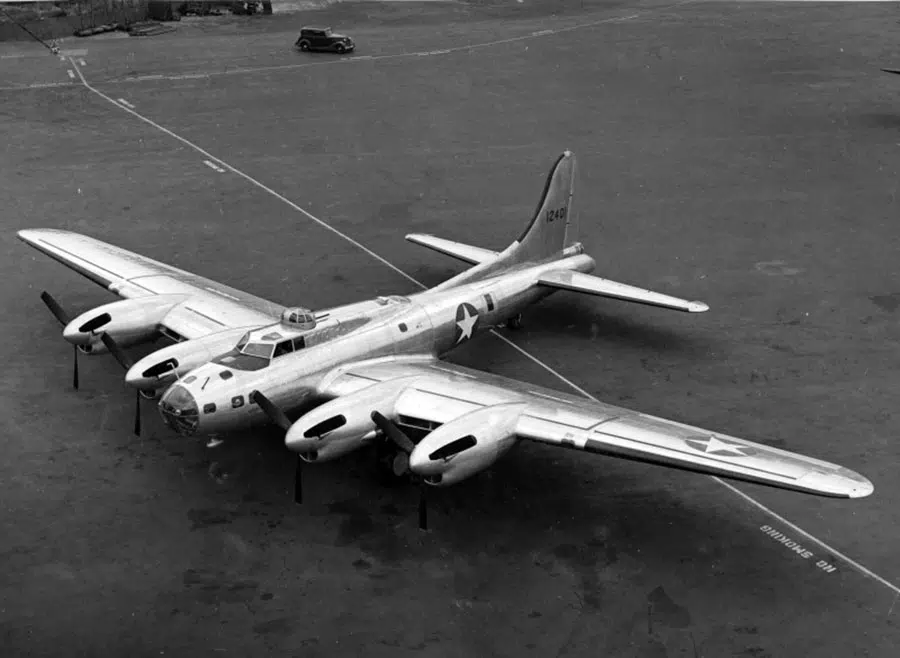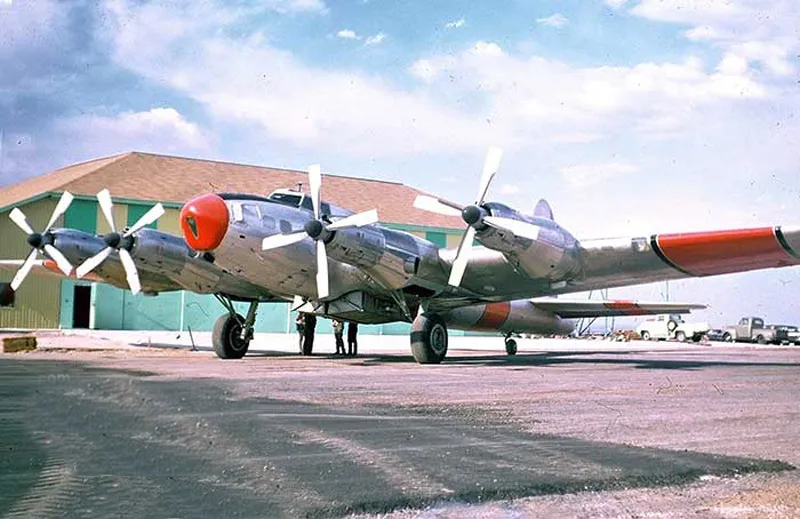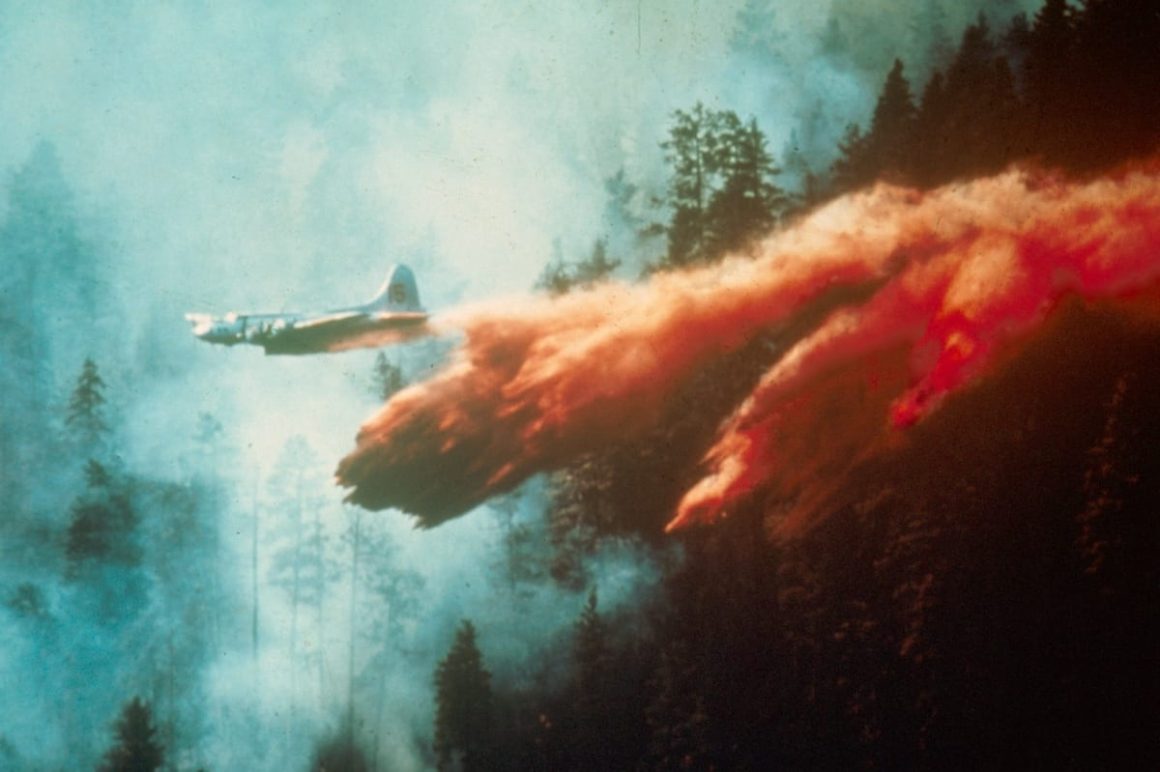The legendary B-17 bomber was so much more than just a means for dropping bombs on Nazi Germany during the Second World War.
Anyone interested in World War II is undoubtedly familiar with the B-17. It endured relentless attacks from German fighters and flak batteries, with countless stories highlighting its resilience. Striking images showcase severely damaged B-17s safely returning to England’s bases. The aircraft also served in testing engine configurations, firefighting, and attack missions.
Early Development of B-17 Bomber With Different Engines
Development of the B-17 bomber began in the 1930s for the US Army Air Corps (USAAC). Its first version, the Model 299, had four Pratt and Whitney R-1690 Hornet nine-cylinder radial engines with 750 horsepower each. Later combat models of the aircraft had Wright R-1820 radial engines. Improvements in these engines brought them from 900 to 1200 horsepower.

Fighter Engine Not a Good Fit for the B-17
In 1942, while the war was going on, Lockheed tested an early B-17E model with different engines. They fitted the bomber with four liquid-cooled Allison V-1710-89 engines. These were fighter engines and usually powered aircraft like P-38s, P-39s, and P-40s. Lockheed predicted the V-1710s would provide 200 more horsepower per engine. The B-17 bomber with the new engines was named the XB-38.

Initial tests of the XB-38 made the aircraft more than 25 miles per hour faster but limited its service ceiling to 29,600 feet. This compromise was not great for a bomber that needed to fly high enough to avoid German flak. Flight testing brought even more problems with the model.
During a test flight over California on 16 June 1943, the number three engine caught fire. The two-man Lockheed test crew had to bail out when flames approached the wing fuel tanks. Pilot George MacDonald died when his parachute failed to open, and the other pilot, Bud Martin, survived with injuries.
Air Force Tests Turboprops and Turbojets
Following the war, the Air Force needed to test turboprop and turbojet designs. They modified several B-17G models as test beds by installing engine mounts in the nose to hold advanced versions of R-3550 piston engines, turboprops, and turbojets. One safety benefit to this configuration was the ability to shut the main engines down while testing the ones in the nose and then restarting them if necessary.
For one series of tests, Curtis-Wright tested the Wright Typhoon XT35 turbine engine on the nose mount. The company originally planned for this engine to power a Boeing bomber that eventually became the B-52, although eventually with different engines.
Long after the Second World War, the B-17 underwent further testing. In 1970, Aero Flight, an air tanker company, equipped a B-17F with four Rolls-Royce Dart turboprop engines. They aimed to deploy the aircraft as an air tanker for firefighting. They mounted the turboprops well forward of the standard propeller position for this upgrade.

In 1946, Wright modified a B-17G for some of these tests by moving the cockpit back and adding a propellor in the plane’s nose.
B-17s Take on Firefighting Missions After World War II
On 18 August 1970, the aircraft was helping fight a fire near Dubois, Wyoming, and was pulling up following a drop when it stalled. The converted bomber struck some trees and crashed, killing the crew. The project ended with that tragedy, but it still wasn’t the final use of the B-17.

In 1969, the Black Hills Aviation air tanker company in Spearfish, South Dakota, purchased a B-17G that had appeared as a prop in the mid-’60s television show “Twelve O’Clock High.” At that point, the aircraft was essentially nothing more than scrap. It had been in storage for several years, and various groups had scavenged parts, including its wings.
Converted Bomber Still Being Used in 1980
Black Hills restored the aircraft and configured it as an air tanker for firefighting. They flew it until 1980 when it crashed in North Carolina, and the wreckage ended up in some woods. In the late 1980s, an aircraft restorer purchased the remains and shipped them to Florida. He then sold parts of the aircraft for use in other B-17 restorations.
Project Aphrodite Used B-17 Bombers as Drones
These tests and modifications to B-17s were not the only alternative missions for the aircraft. In 1944, the USAAC tested what may have been the most interesting mission for the bomber with Project Aphrodite. This mission involved using them as drones to attack fortified German U-boat pens and V-1 launch sites.

The project included removing most internal components except for the pilot and radio operator space. Crews then packed the fuselage with 20,000 pounds of Torpex high explosive and enough fuel for a 350-mile one-way flight. The unusual payload was much more than the usual 4,000-pound bomb load on regular manned missions.
For Project Aphrodite missions, the pilot would take the aircraft to 2000 feet and then transfer control to a following B-17. Their jobs were complete, and the flight crew went on to bail out while still over England. Then, using a radio control system, the following aircraft would guide the explosive-packed B-17 to the target.
Multiple Failures for Project Aphrodite
Several B-17s flew Project Aphrodite missions over France, but none hit their intended targets. Also, several crew members died while trying to bail out. Ironically, the most powerful weapon to ever detonate in the UK may have been a Project Aphrodite B-17 that exploded in the air near Orford. It destroyed two acres of trees and left a 100-foot-wide crater. Today, the crater is filled with water and is known as Fisher’s Lake.
Total
0
Shares
Credit: avgeekery.com








